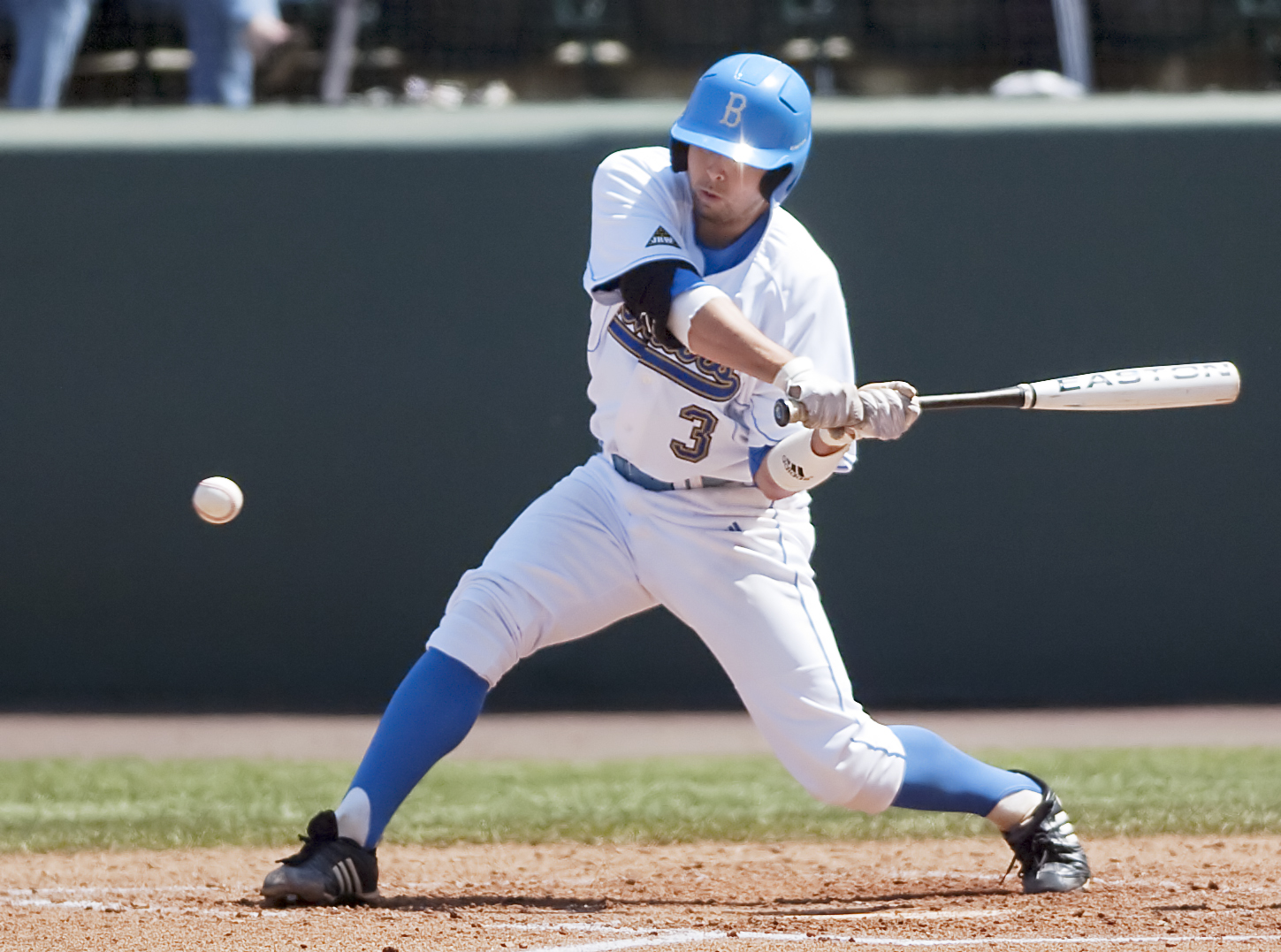Baseball scores hit hard by new NCAA rules about metal bats

Junior catcher Steve Rodriguez and the Bruins hope to improve their offense against UC Riverside today.
BASEBALL
UC riverside
Today, 6 p.m.
Riverside
Follow GameTracker on UCLABruins.com
By Ryan Eshoff
April 5, 2011 12:01 a.m.
A century after Major League Baseball’s “dead-ball era” featured exceptionally low run totals, the NCAA is experiencing a bit of revisionist history.
From about the turn of the 20th century to the 1920s ““ which saw the emergence of Babe Ruth and other sluggers ““ baseball was a pitcher’s game. In 1908, the average runs scored per game was a paltry 3.4.
Following the 2010 season, in which UCLA’s baseball team was the national runner-up, the NCAA created new regulations for the metal bats used in college baseball, with the intent of curbing outrageous offensive outbursts in addition to increasing player safety.
The effect has been instantaneous and unmistakable. Home run numbers and scoring totals are down across the board. UCLA ““ which travels to play UC Riverside tonight ““ hit 65 a year ago. This year, the Bruins are on pace for about 10.
“It’s a new brand of baseball that we need to keep on figuring out,” coach John Savage said. “Anybody that watches the game knows it’s changed.”
The language behind the new regulations is that the intent was to make the performance of metal bats more equitable with that of the wooden bats used in the professional ranks.
In addressing the changes in a USA Today article that ran in January, NCAA vice president of baseball and football Dennis Poppe said that he sees nothing wrong with extremely low-scoring games.
“Baseball was meant to be played a certain way, and wood-like performance of the bat is a part of that,” Poppe said.
If that’s the case, the NCAA has to be awfully proud of this UCLA team, which has spent the early part of this season closely adhering to Poppe’s vision of tense, low-scoring affairs.
In this most recent weekend, a three-game home series with Washington, UCLA secured a sweep despite only outscoring the Huskies 10-6.
“2-1, 5-3, 3-2, I mean, come on,” Savage said, referencing the scores of the three games. “Every game feels the same. It’s a complete grind. You can get your ones and twos, but the fours and fives are just not coming around.”
With the threat of a home run dramatically decreased, pitchers can be more aggressive. That certainly helps a team like UCLA, which features a trio of power arms in juniors Gerrit Cole and Trevor Bauer and freshman Adam Plutko.
Still, it’s been a bit of an adjustment for a number of the UCLA hitters, who have to get used to seeing an abnormally low home-run total in the box scores.
“With these bats, it changes the game,” said sophomore Cody Regis, who has one home run this year after hitting nine a year ago. “It makes it a whole new way to play the game. The bunting game, the stealing, all that stuff comes into play a lot more.”
It’s been working to some extent as of late ““ the Bruins have won five of their first six games in the Pac-10, a conference that Savage consistently contends is the best in the country.
The Bruins have been winning despite not putting up enormous offensive performances. Then again, maybe those types of outputs are a thing of the past.
At this point in the season, the lack of home runs on solidly hit balls still has some Bruins shaking their heads.
“There’s been a couple where I’ve thought, “˜I hit that real well,'” said catcher Steve Rodriguez, who has yet to go deep this year after hitting eight homers a year ago. “Then it gets caught in the outfield and you’re just like, “˜Damn.'”


